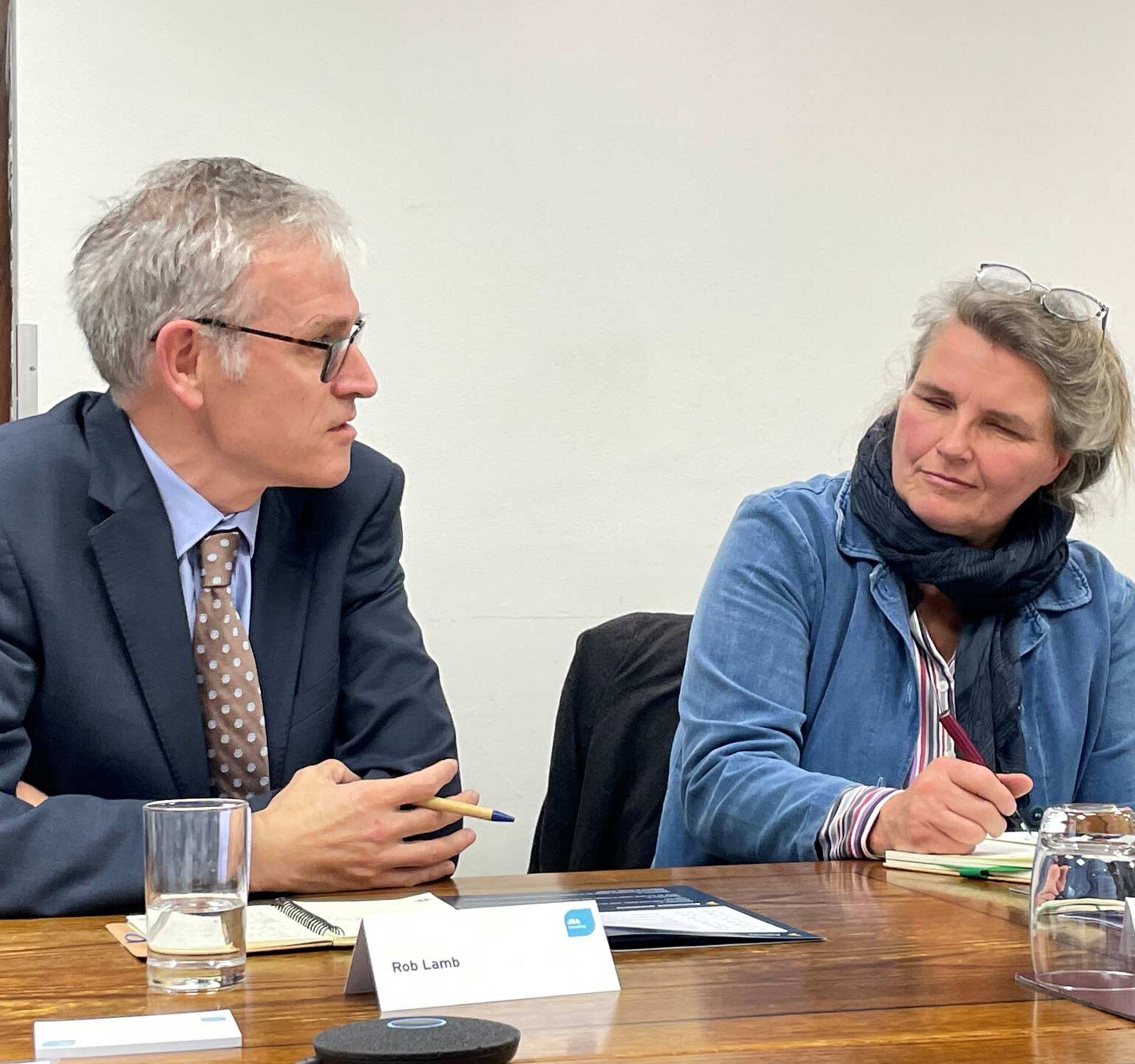As the UK pursues its ambition for sustained economic growth, flood and coastal risk management (FCRM) is increasingly recognised as a strategic enabler, protecting infrastructure, unlocking development, and enhancing community resilience. Yet, the mechanisms that underpin investment in FCRM must evolve to meet the scale and complexity of today’s climate and economic challenges.
The UK government is preparing a comprehensive review of the Partnership Funding (PF) model, which has guided the allocation of Flood Defence Grant-in-Aid since 2011. This review will examine how effectively the model supports equitable investment, incentivises local contributions, and enables long-term adaptation.
In her response to parliamentary questions, Emma Hardy, Under-Secretary of State for Water and Flooding, stated, “We will be consulting on a new and simplified approach to funding flood projects in the coming months.”
However, reforming the PF model presents a critical opportunity to align flood risk investment with broader goals: sustainable growth, opportunity for all, and climate resilience. By modernising how we value and fund resilience, we can unlock the full potential of FCRM to support thriving, future-ready communities across the UK.

Why are changes to Partnership Funding needed?
The policy aim of PF for Flood and Coastal Erosion Risk Management (FCERM) projects in England is to maximise the number of worthwhile projects by sharing costs between national and local sources of funding.
Introduced in 2011, the PF model was designed to ensure that public investment is targeted where it delivers the greatest value, while encouraging local contributions to extend the reach of central government funding.
Under this model, any project where the benefits outweigh the costs is eligible for some level of Grant-in-Aid (GiA). If GiA does not cover the full cost, the remaining funding must be raised through partner contributions - from local authorities, businesses, developers, or community groups who benefit from the scheme.
This approach aims to: encourage local investment and choice, promote transparency and fairness in funding allocation and enable more projects to proceed than would be possible with government funding alone. However, as the impacts of climate change intensify and economic pressures mount, the PF model is showing signs of strain. The upcoming government review offers a timely opportunity to address long-standing challenges and ensure the model is fit for a future defined by climate risk and the need for sustainable economic growth.
What are the limitations of the current Partnership Funding model?
Despite its original intent to broaden investment and empower local choice, the current Partnership Funding (PF) model is increasingly seen as misaligned with today’s climate and economic realities. A 2025 review of PF prepared by Environment Agency Delivery Partners highlights several systemic issues: declining raw PF scores have made it harder for projects to qualify for sufficient GiA, especially those in lower-income or non-residential areas. The model’s heavy reliance on residential property values and short-term risk reduction skews investment away from climate adaptation, nature-based solutions, and strategic infrastructure. It also fails to adequately capture social value, business continuity, and long-term resilience. The PF calculator itself is described as opaque and resource-intensive, particularly burdensome for small or innovative schemes. As a result, the model often favours schemes in wealthier areas and discourages investment in projects that could deliver broader, long-term benefits.

It is complex, too. On my last count, it was easy to identify thirteen types of capital funding, with very little thought!
These limitations underscore the urgent need for reform to ensure PF supports inclusive, climate-ready growth. These limitations directly undermine the UK government’s ambitions to drive sustainable economic growth and build climate-resilient communities.
By undervaluing long-term adaptation, social value, and non-residential benefits, the current model restricts investment in the very systems—housing, infrastructure, and natural capital—that underpin national resilience. Reform is essential to align funding with the government’s five missions, including making the UK a clean energy superpower and kickstarting economic growth through climate adaptation.
What lessons can be learnt from previous Partnership Funding reviews?
Reflecting on the limitations of the current model, a review of PF is due. But have we not been here before? The 2018 government-commissioned evaluation of the model acknowledged its success in increasing total investment and enabling more projects to proceed.
However, this evaluation also identified several critical limitations:
- Equity concerns: The model disproportionately favoured high-value residential areas, limiting access for deprived or rural communities.
- Complexity and inconsistency: Administrative burdens and inconsistent application across Risk Management Authorities (RMAs) hindered delivery.
- Underrepresentation of nature-based solutions: Rigid benefit calculations made it difficult to fund surface water and green infrastructure schemes.
- Barriers to contributions: Securing partner funding remained time-consuming and uncertain.
To address these limitations, the suggested recommendations included:
- Expanding the scope of recognised benefits to include climate adaptation, social value, and green infrastructure.
- Providing training and capacity building for RMAs.
- Introducing greater proportionality for small schemes.
- Streamlining legal and funding processes to reduce delays and inefficiencies.
And yet, only four years before, a 2014 evaluation, commissioned by Defra, identified similar challenges. This included concerns that there were barriers to delivery caused by administrative complexity and time-consuming processes, and limitations to the model’s ability to support businesses, green infrastructure, and nature-based solutions. Its recommendations included: introducing greater proportionality for small and innovative schemes, broadening the scope of benefits to include climate adaptation, surface water management, and social value, and improving training and capacity building for Risk Management Authorities.
The latest, 2025, review calls for a fundamental reset to ensure it supports climate-resilient, inclusive, and efficient investment. It states an imperative to broaden the scope of recognised benefits to reflect social value, climate adaptation, and nature-based solutions; improve equity by reducing reliance on property values; and simplification of the Partnership Funding Calculator to reduce administrative burden. The review also urges better alignment with long-term government growth and resilience goals, and more flexible funding mechanisms to support non-residential, strategic, and multi-benefit schemes that are currently underfunded or excluded from eligibility.
Sounds familiar, doesn’t it? The 2025 Partnership Funding Review echoes many of the concerns and recommendations raised in both the 2014 and 2018 evaluations, revealing a strong and consistent case for reform. The alignment across more than a decade of evaluations underscores the urgency of implementing these long-standing recommendations. Action is more important than words. The government’s purported and yet to be consulted on, simplified approach to partnership funding must deliver change.
How will funding reforms support the Government's growth ambitions?
Reforming FCERM funding can play a pivotal role in advancing wider government priorities. By aligning investment with long-term resilience, funding reforms can support the UK’s ambitions for sustainable economic growth and becoming a net zero economy. It also supports the government’s levelling up agenda, which aims to reduce regional disparities and improve infrastructure and opportunity across the UK. A more flexible, inclusive model would enable projects that deliver multi-sector benefits - such as protecting infrastructure, unlocking housing, enhancing biodiversity, and supporting public health - while embedding climate resilience into planning and regeneration strategies.
To meet the scale of today’s challenges, the funding model must evolve to recognise the interconnected benefits of flood and coastal resilience, across housing, health, transport, food security, and economic productivity. A narrow focus on short-term, property-based metrics fails to capture the true value of resilience investments. A reformed model should incentivise multi-sector collaboration, support nature-based and adaptive solutions, and unlock co-benefits that drive inclusive, climate-smart growth across the UK.

As JBA Consulting advised in correspondence to government, the challenges of flood and water management cannot be solved by Defra alone. A truly resilient future demands cross-departmental coordination, integrated investment planning, and shared ownership of climate resilience goals. Without alignment across departments - such as housing, transport, health, and education - opportunities for multi-benefit, cost-effective solutions are lost. Reforming Partnership Funding must go hand-in-hand with joined-up governance to unlock the full value of resilience investments.
At a past cross-sector roundtable event hosted by JBA in 2024, industry leaders emphasised the need to integrate capital and revenue funding streams to support long-term climate resilience. The recommendations from this event were issued to government and included a call for a flexible investment model that enables multi-objective outcomes, particularly at catchment and river basin scales. Emphasising that funding should prioritise nature-based solutions and be structured to support cross-departmental cooperation, long-term maintenance, and diverse funding sources - ensuring resilience investments deliver maximum environmental, social, and economic value across sectors.
In June, we will host a follow-up round table about funding. Our next session with cross-disciplinary industry leaders will focus on aligning government funding with integrated, multi-objective outcomes. Building on the momentum of last year’s event, we anticipate exploring how such approaches can support productivity, skills, and sustainability in construction, too.
Building a smarter, fairer, and more resilient future together
To unlock the full potential of FCRM as a driver of sustainable development, the PF model must be recalibrated to align with national and local growth strategies. By valuing long-term resilience, environmental enhancement, and economic regeneration alongside immediate flood protection, a modernised PF framework can catalyse investment in adaptive infrastructure, nature-based solutions, and place-based innovation. This integrated approach would not only safeguard communities but also stimulate green growth, support levelling-up ambitions, and deliver lasting value for public and private partners alike.
The upcoming review of the PF model is a pivotal moment to reimagine how we invest in the UK’s flood and coastal resilience. As climate risks escalate and the demand for sustainable, inclusive growth intensifies, we must seize this opportunity to align funding mechanisms with a future-ready agenda. Reforming PF is not just a technical exercise—it’s a strategic imperative to unlock resilient growth, empower local innovation, and deliver climate-ready communities. We call on policymakers, delivery partners, and communities to come together in shaping a funding model that values long-term adaptation, integrates with growth strategies, and reflects the true breadth of benefits that flood and coastal risk management can deliver. Join the conversation—your voice is vital in building a smarter, fairer, and more resilient future.

To discuss how resilience funding reforms can support us in unlocking the potential of FCRM, join Marc Pinnell and the JBA team at Flood & Coast 2025 from 3-5 June.



